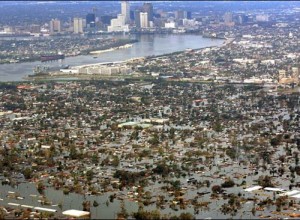I sit here searching on Google for project management (PM) articles hoping to find something that explicitly discusses key concepts in the field. After many failed search inquiries, I think to myself “There has to be an example of PM in the real world.” Bing! I immediately conjure up the biggest event that FEMA has been scrutinized for, Hurricane Katrina. I type in “FEMA” into the search box, and like it was willed to happen, I find something worth talking about.
In the article, FEMA Faces Intense Scrutiny, it addresses FEMA’s history and its most recent national disaster, Hurricane Katrina. There are a lot of criticisms about FEMA’s actions or lack thereof. If we were to examine each disaster relief as a project, we will see how its failures can be learning lessons for PM in corporations.
A few sentences from the article stuck out to me and we will go further in detail about each piece of information.
1. “From the local level, officials complained of communication breakdowns and the lack of leadership from the federal government.”
FEMA is a governmental agency that coordinates the relief based on what the government orders it to do. However, the project manager (the government) never communicated with its reports what their task was. In fact, in the article, it stated that FEMA rejected personnel and supplied offered from other emergency forces. Those are the resources the agency actually needed. The PM should always communicate what resources are available, and he should say what is expected of the agency.
2. “We wanted helicopters, food and water. They wanted to negotiate an organizational chart.”
Two stakeholders placed two different goals. PM is a subgroup of an organization. FEMA’s goals should align with the government’s goal. It’s an issue of priority and also accomplishing the overall picture, which was quick relief to U.S. citizens. In a corporation, it’s important the subgroup’s goals align with the company’s. The subgroup will have the necessary support, such as resources and political backing, to complete the task effectively.
3. “’All hazards’ preparation focused too much on terrorism […] but not natural disasters.”
The agency was not nimble enough to deal with different types of disasters. It was adopted into the Department of Homeland Security in 2003. Since then, it trained to handle terrorist attacks. When Hurricane Katrina hit, it was unprepared for the calamity and was at disarray on execution. PM is about adaptability. In business, PM would do a risk assessment, do a worst-case scenario, and have a potential plan of action.
When it comes to managing a project with an extremely short deadline, it’s important to have the qualitative infrastructure in place. Of course, that is easier said than done. After the harsh criticism from one of the most detrimental disasters in the United State, I am sure FEMA has taken a look at its organizational structure and processes. Hopefully, it restructured itself, so it can do what it was intended.
(Photo Source: 10 Interesting Facts about Hurricane Katrina)

Very interesting article. Unfortunately, I have seen similar issues in my career. Individuals can get caught up in the planning phase and forget the reason they’re planning. Like you mentioned with the need for helicopters and food, sometimes it is more important to get to the outcome as quickly as possible, even if the process doesn’t follow the prescribed project management steps. In my opinion, an important characteristic of a project manager is their ability to adapt without losing steam. Additionally, project managers are called upon to see the big picture. It can be challenging to plan for every “what if” scenario, but ideally, most would be recognized and addressed accordingly.
This project of FEMA hits home because my company works closely with FEMA on many initiatives. People look to first responders to provide support in the time of need, and many people assume that it will be there when we need it. However many people do not appreciate the amount of time, effort, planning, money, etc. that goes into a successful response. The importance of this issues(and lack of an effective execution) was highlighted in the Katrina incident. In many ways, this was a natural disaster turned into a man made disaster. This was an unfortunate situation, but I think FEMA realized that they cannot stick with their old method of operations. Old school organizations cannot sit back and say “this is what we’ve always done”. times have changed and the magnitude of importance, especially in disaster response, is something that cannot be overlooked. FEMA has made many improvements and the mistakes of Katrina will hopefully never happen again.
Thanks for bringing this issue. I used to work for a not-for-profit organization and the fund raising team was able to collect over $200,000 for the victims of Hurricane Katrina. I was not working with the company at that time, but later on when I started working there as an internal auditor I saw a big lump sum on a balance sheet account that has the name “Hurricane Katrina” and it stayed on the balance sheet until I left the company. When I asked the CFO about the issue he couldn’t give me a straight answer but from this article I could understand exactly how project manager could create a disaster not just for himself but also for a huge amount of abiding citizen. Imagine if all this funds would assist and relief US citizens.